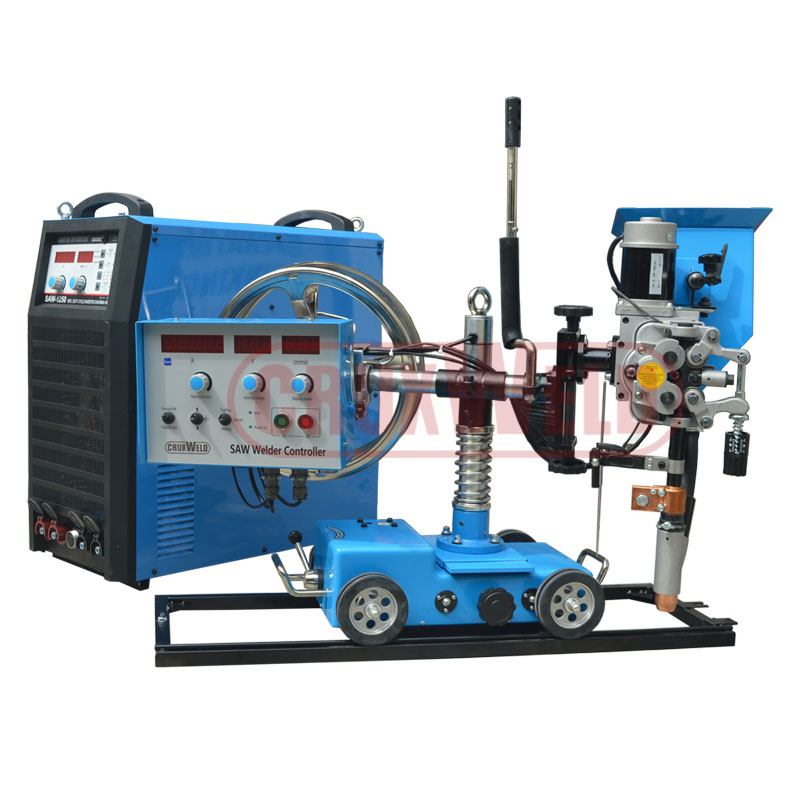Unveiling the Power and Precision of Saw Welding Machines
In the world of metal fabrication and industrial manufacturing, welding is an indispensable process. Welding technologies have evolved significantly over the years, and one method that has gained prominence for its efficiency and precision is Submerged Arc Welding (SAW). At the heart of this advanced welding process lies the crucial component - the SAW welding machine. In this article, we will explore the capabilities and significance of SAW welding machines, shedding light on their vital role in various industries.

1. The Science Behind Submerged Arc Welding
Before diving into the specifics of SAW welding machines, it's important to understand the welding process they facilitate. Submerged Arc Welding is a fusion welding process that involves the formation of a weld by melting the workpiece and a continuously fed wire electrode. What sets SAW apart from other welding methods is the use of a granular flux material that completely covers the welding area. This creates a "submerged" environment that shields the weld from atmospheric contaminants, resulting in a high-quality, clean, and strong weld.
2. The Key Components of a SAW Welding Machine
A mig welding machine is a complex piece of equipment designed to execute the submerged arc welding process efficiently. It consists of several key components, each contributing to the success of the welding operation:
-
Power Source: The power source provides the electrical energy required for the welding process. It typically delivers a constant current to control the heat input and ensure a stable arc.
-
Wire Feeder: The wire feeder mechanism is responsible for continuously supplying the welding wire electrode to the workpiece at a precise and controlled rate. This ensures a consistent weld bead.
-
Flux Hopper: The flux hopper holds and dispenses the granular flux material onto the welding area. The flux not only shields the weld but also aids in creating a slag cover that protects the molten weld pool as it solidifies.
-
Control Panel: SAW welding machines often feature user-friendly control panels that allow operators to adjust welding parameters such as voltage, amperage, and travel speed to meet specific project requirements.
-
Welding Head and Torch: The welding head or torch is the component that carries the electrode wire and creates the arc. It is designed to maintain the optimal distance between the electrode and the workpiece.
3. Advantages of SAW Welding Machines
SAW welding machines offer numerous advantages that make them a preferred choice in various industries:
-
High Welding Speed: SAW is known for its high deposition rates, making it ideal for welding thick materials quickly and efficiently.
-
Excellent Weld Quality: The submerged arc process produces clean, uniform, and high-quality welds with minimal spatter and defects.
-
Reduced Operator Fatigue: SAW welding is a semi-automatic process, reducing the physical strain on operators compared to manual welding methods.
-
Versatility: SAW can be used to weld a wide range of materials, including carbon steel, stainless steel, and various alloys.
-
Cost-Effective: Due to its high deposition rates and efficiency, SAW often proves cost-effective for large-scale welding projects.
4. Applications Across Industries
SAW welding machines find applications across various industries, including shipbuilding, construction, pipeline fabrication, and manufacturing of heavy machinery and equipment. Their ability to produce high-quality welds efficiently and consistently makes them invaluable in projects where structural integrity and precision are paramount.
Submerged Arc Welding machines are the workhorses of modern welding, enabling industries to meet the demands of high-quality and high-speed welding. As technology continues to advance, these machines are likely to evolve further, expanding their capabilities and applications. In an era where precision and efficiency are critical, SAW welding machines stand as a testament to human ingenuity, playing a pivotal role in the creation of strong and reliable welds that form the backbone of countless structures and products around the world.
Comments
Post a Comment